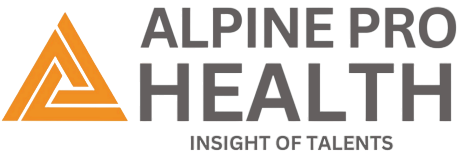In the fast-evolving world of healthcare, clinical documentation serves as the backbone of not only patient care but also the financial engine that keeps hospitals and clinics running Revenue Cycle Management (RCM). One area where this connection is most evident is in denial management. Poor clinical documentation leads to claim rejections, revenue leakage, compliance risks, and added administrative costs.
In this article, we explore how accurate, timely, and comprehensive clinical documentation plays a vital role in improving RCM outcomes and minimizing claim denials. Whether you’re a provider, coder, or revenue cycle leader, understanding this connection can elevate both your patient care and bottom-line performance.
What Is Clinical Documentation?
Clinical documentation refers to the detailed recording of a patient’s medical history, diagnoses, treatments, and care plans during an episode of care. It includes physician notes, test results, imaging reports, medication records, and any other relevant clinical data.
Effective clinical documentation should be:
- Accurate: Reflects the patient’s actual health condition and treatment
- Complete: Captures all clinically relevant information
- Timely: Entered during or immediately after patient care
- Compliant: Aligns with industry regulations (HIPAA, CMS, etc.)
When done right, it ensures quality care, whereas when done poorly, it invites financial and operational risks.
The Role of Clinical Documentation in Revenue Cycle Management
RCM encompasses the entire process of managing patient services from registration to final payment. Clinical documentation is at the heart of several key RCM stages:
1. Coding and Billing
Medical coders rely heavily on documentation to assign ICD-10, CPT, and HCPCS codes, and inaccurate or incomplete documentation can lead to:
- Upcoding/Downcoding
- Incorrect DRG assignment
- Claim rejections
2. Charge Capture
Without proper documentation of services provided, certain procedures may not be billed at all leading to missed revenue.
3. Medical Necessity
Payers require evidence that a service was medically necessary. Poor documentation can lead to denials even if the care provided was appropriate.
4. Audit Readiness
In case of payer audits or RAC (Recovery Audit Contractor) reviews, comprehensive documentation protects against recoupments and penalties.
Poor Clinical Documentation = High Denial Rates
Clinical documentation errors are a leading cause of claim denials. Some common issues include:
- Lack of specificity (e.g., “heart disease” vs “congestive heart failure”)
- Missing diagnosis justifications
- Inconsistent provider notes
- No linkage between procedures and conditions
- Late documentation
According to industry data, up to 60% of claim denials can be traced back to documentation deficiencies. Even worse, denied claims delay revenue collection and require significant resources to rework and appeal.
Financial Impact of Denials on Healthcare Providers
Claim denials are not just administrative headaches; they are costly.
- Each denied claim can cost between $25 to $118 to rework
- 65% of denied claims are never resubmitted
- On average, denials reduce hospital revenue by 3-5%
Improving documentation is one of the easiest and most effective ways to reduce denial volume and protect revenue.
How Clinical Documentation Improvement (CDI) Programs Help
A Clinical Documentation Improvement (CDI) program is a structured initiative aimed at enhancing the quality and clarity of clinical documentation.
Benefits of CDI for RCM and Denial Management:
- Increased Claim Acceptance
- Cleaner claims reduce the need for rework
- Fewer rejections from payers
- Cleaner claims reduce the need for rework
- Better Coding Accuracy
- Improves Diagnosis-Related Group (DRG) assignment
- Ensures accurate HCC capture for risk adjustment
- Improves Diagnosis-Related Group (DRG) assignment
- Improved Provider Communication
- Enhances documentation habits
- Encourages timely and detailed entries
- Enhances documentation habits
- Optimized Reimbursement
- Reflects patient acuity and service complexity
- Avoids underpayments
- Reflects patient acuity and service complexity
- Stronger Audit Defense
- Comprehensive documentation supports billing and coding decisions
- Reduces audit risks
- Comprehensive documentation supports billing and coding decisions
Technology’s Role in Enhancing Clinical Documentation
With advancements in AI and automation, the quality of clinical documentation has greatly improved.. Modern CDI tools integrate with EHR systems to:
- Identify documentation gaps in real time
- Provide prompts for specificity (e.g., laterality, severity)
- Flag unsupported codes or missing elements
- Ensure alignment between diagnosis and treatment
Natural Language Processing (NLP) and speech recognition software also make it easier for providers to create detailed documentation without spending extra time on manual entry.
Best Practices to Improve Documentation and Reduce Denials
- Educate Providers Regularly
- Conduct workshops on clinical documentation standards
- Highlight denial trends and how to avoid them
- Conduct workshops on clinical documentation standards
- Implement Concurrent CDI Reviews
- Review documentation before billing
- Ensure real-time improvement
- Review documentation before billing
- Leverage Analytics
- Use denial reports to identify root causes
- Track improvement over time
- Use denial reports to identify root causes
- Close Communication Gaps
- Establish feedback loops between coders, CDI specialists, and providers
- Establish feedback loops between coders, CDI specialists, and providers
- Audit Proactively
- Perform regular internal audits to assess documentation and coding quality
- Perform regular internal audits to assess documentation and coding quality
Real-World Example: How Better Documentation Reduced Denials
A multi-specialty healthcare group was experiencing a 20% denial rate, mostly due to lack of clinical specificity. By launching a CDI program and providing targeted physician education, they were able to:
- Reduce denials by 40% in 6 months
- Improve coding accuracy by 30%
- Recover over $500,000 in lost revenue
This shows the tangible impact proper documentation can have on RCM performance.
Final Thoughts
Clinical documentation is more than a regulatory requirement; it’s the key to accurate coding, faster reimbursements, and lower denial rates. In an environment where every dollar and every detail counts, investing in Clinical Documentation Improvement (CDI) is no longer optional; it’s essential.
By aligning clinical documentation with revenue cycle strategies, healthcare organizations can boost financial performance while maintaining compliance and improving patient outcomes.


